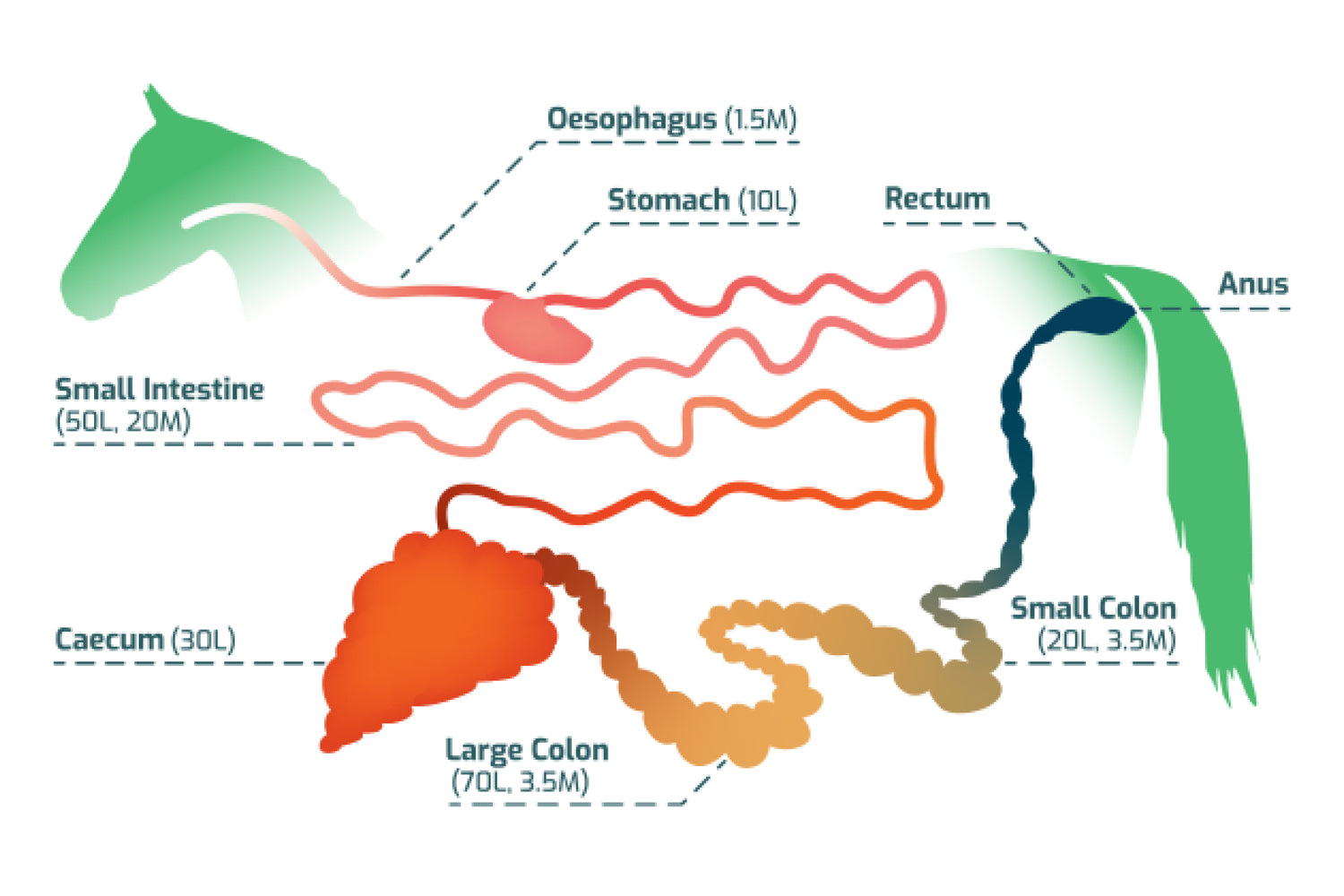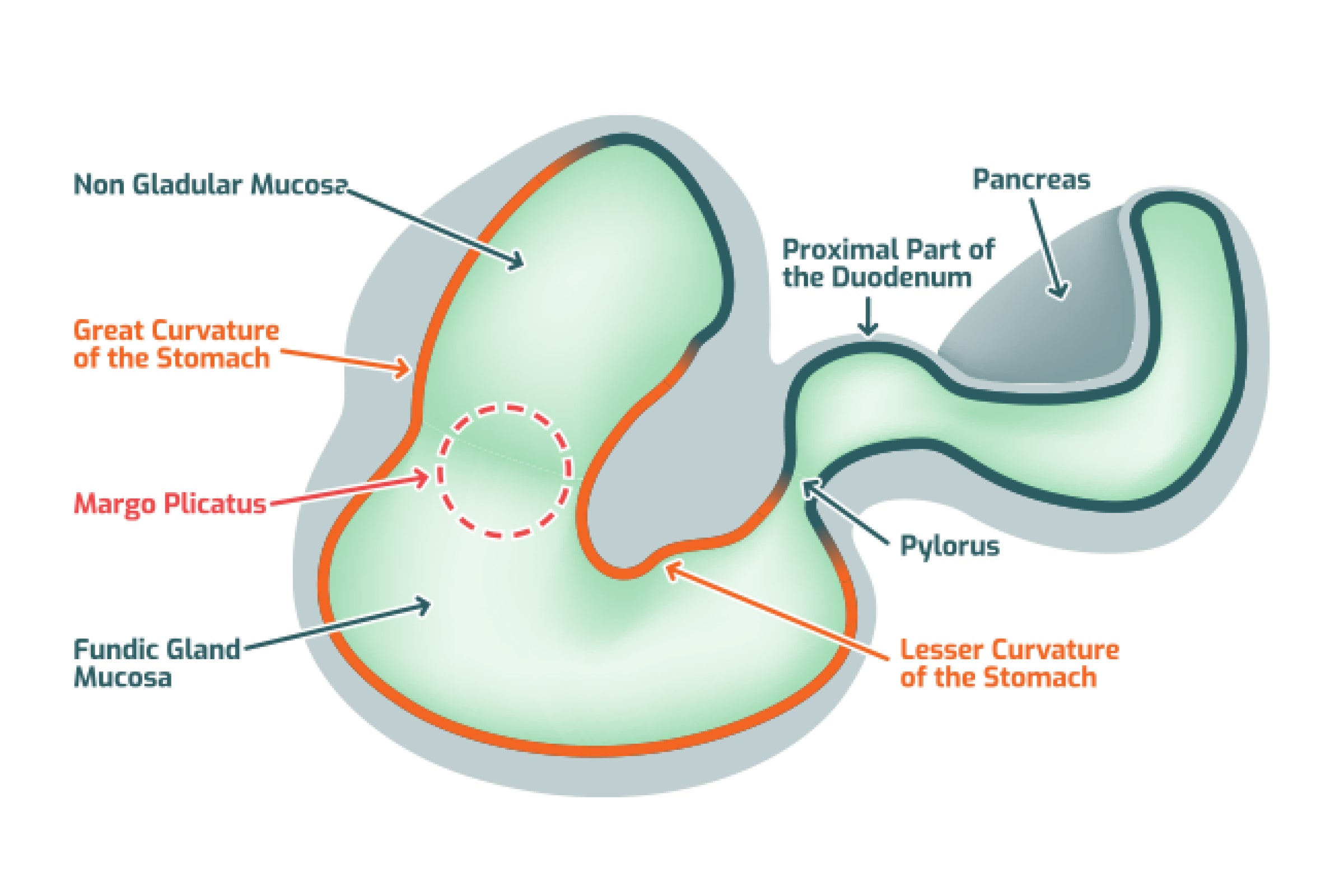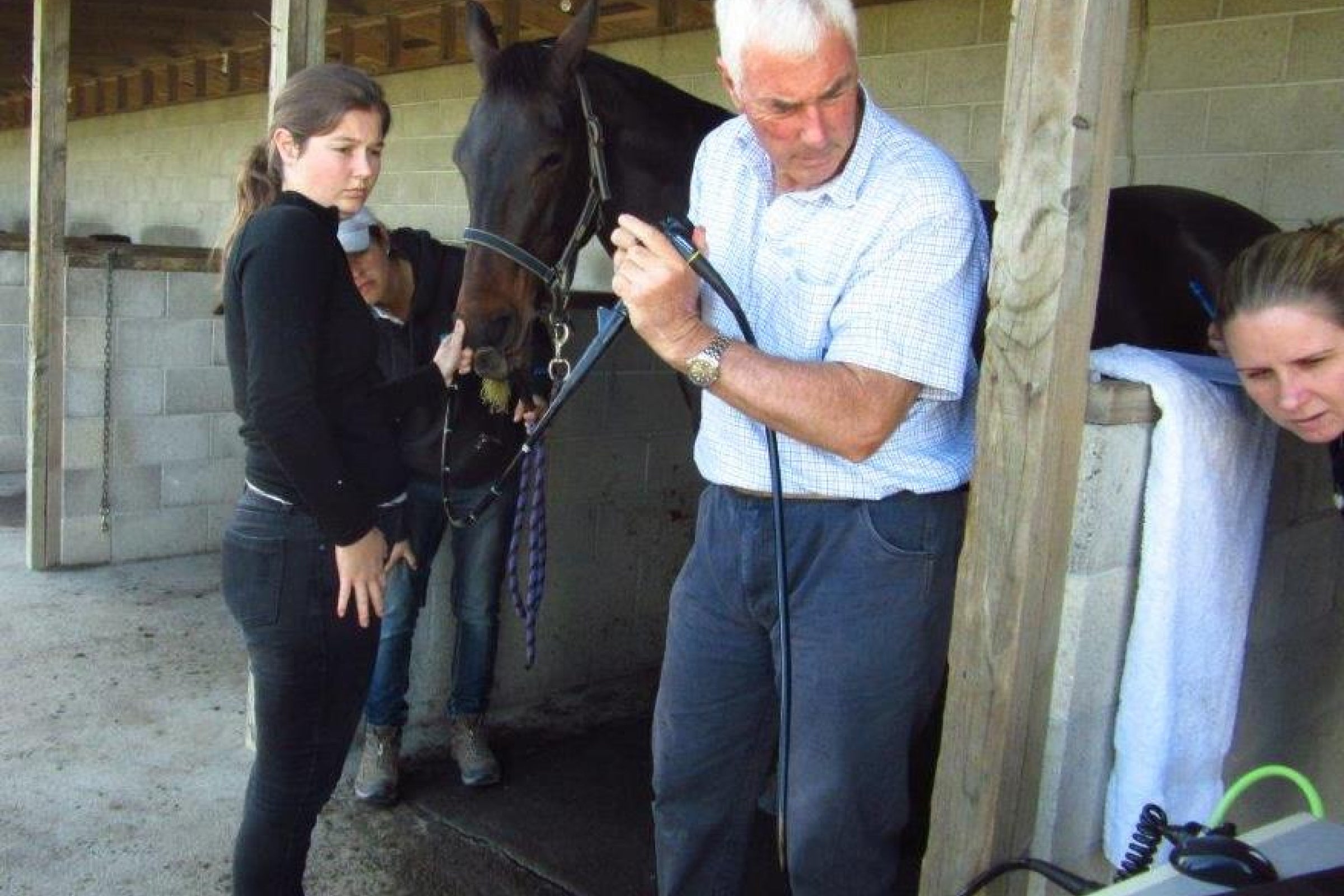The horse's digestive tract is very different from other mammals due to the fact that it digests parts of its feed with enzymes first in the foregut and then ferments in the hindgut.
THE STOMACH
- In response to chewing food, horses produce saliva which helps move digesta from the mouth to the stomach. Saliva also acts as a buffer to the high acid production of the stomach due to the sodium bicarbonate it contains.
- The stomach is small, approximately the size of a rugby ball and makes up 9% of the digestive system. The stomach’s main digestive function is to mix digesta with hydrochloric acid and the enzyme pepsin. The acid lowers the pH of the stomachs contents which contributes to the breakdown of feed particles and pepsin initiates protein digestion.
- The stomach is divided into 2 regions, the upper squamous region and the lower glandular region. Acid is continuously secreted into the glandular area which makes up 2/3 rd of the stomach volume, the sensitive lining is protected by a mucus coating. The upper squamous region is unprotected
THE SMALL INTESTINE
- The small intestine is approximately 21 meters long and its main purpose is to continue breaking down the digesta into smaller particles and to begin absorption of nutrients. Bile is continuously secreted which initiates fat digestion. Most fat, protein, simple sugars, vitamins and minerals are digested and absorbed in the small intestine.
THE HINDGUT
- The hindgut of the horse comprises the cecum, large colon, small colon and rectum and makes up approximately 63% of the digestive system.
- The major function of the hindgut is the microbial fermentation of plant-based fibre by billions of protozoa, fungi and bacteria, together known as microbes.
- Fermentation produces volatile fatty acids, an important energy source as well as most of the B-vitamins and some amino acids.
- The diet composition affects the makeup of the microbial population. Correct hindgut microflora populations depend on good nutrition, beneficial bacteria, pH and limiting exposure to pathogens. Effective administration of technical feed ingredients into the hind gut requires these ingredients to be encapsulated or protected such as the probiotic in Maxia Digest




